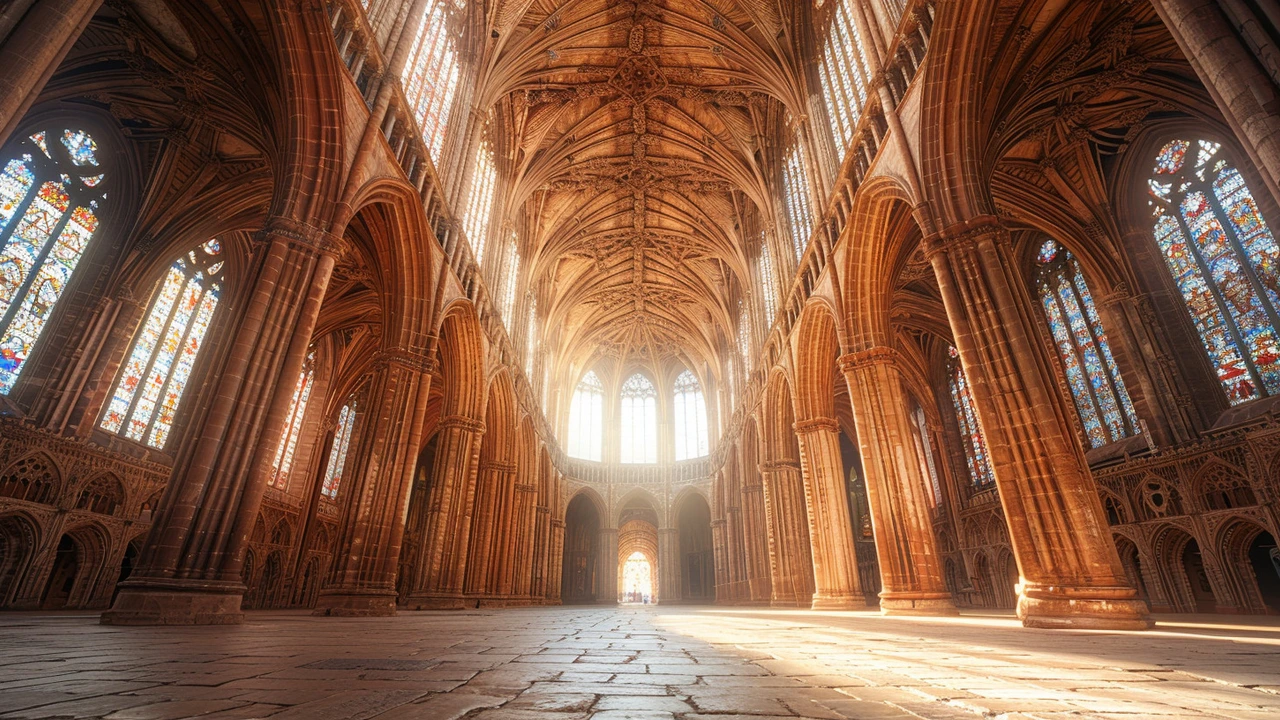Uncover the hidden engineering, spiritual purpose, and regional variations of Romanesque architecture - the powerful, stone-built style that shaped medieval Europe with thick walls, rounded arches, and carvings that told stories to the illiterate.
Romanesque architecture: how to spot it and why it matters
Some Romanesque churches have walls so thick they feel like fortresses — and that’s no accident. Built mostly between about 1000 and 1150, Romanesque buildings combine simple, strong forms with decorative stonework. If you want to recognize the style on a walk or plan a visit, this guide gives the practical clues and real examples to look for.
Key features to spot
Start with the arches. Romanesque favors rounded arches over pointed ones. Look up at doorways, windows, and arcades: those smooth semicircles are a clear sign. Walls are heavy and often plain, with small windows that make interiors dim and quiet. Vaulting began as barrel vaults (think long, curved tunnels) and later moved to groin vaults where two barrel vaults cross — both try to replace wooden roofs with stone.
Check the supports: massive piers and thick columns hold the weight, not thin slender posts. Capitals (the tops of columns) often carry carved scenes — animals, human figures, or simple foliage. On exteriors you’ll find decorative arcading (rows of blind arches), sturdy towers, and sculpted tympanums above the main portal telling biblical stories. In Norman-influenced areas, you might also spot zigzags and chevron patterns carved into stone.
Where and what to see
Want examples? Durham Cathedral in England is a textbook case of early Romanesque vaulting and solid piers. In France, Cluny Abbey (what remains of it) and the Basilica of Saint-Sernin in Toulouse show the pilgrimage-era layout with an extended choir and radiating chapels. Germany's Speyer Cathedral is an imposing Romanesque imperial church. In Italy, the Pisa Cathedral complex mixes local Romanesque with decorative marble and lean-tower drama. When you visit, walk the exterior first: towers, portals, and arcading tell most of the story.
If you’re comparing Romanesque to Gothic, use two quick tests: arches (rounded = Romanesque) and light (small windows = Romanesque). Gothic introduced pointed arches and larger stained-glass windows, which let in much more light.
Practical tips for visiting: bring a flashlight or use your phone light to see carved capitals and reliefs inside, and look for worn steps and door edges — they tell you where medieval pilgrims touched and walked. Take photos of portals straight on to capture tympanum scenes, and walk the ambulatory (the walkway behind the choir) to see how chapels connect for pilgrims.
Romanesque buildings were built to last, and their plain strength still feels powerful today. Spotting its features trains your eye for medieval design and makes visits more interesting — you’ll stop seeing just a big stone church and start noticing the ideas and people behind its walls.
This article delves into the unique characteristics and history of Romanesque architecture, which thrived during the medieval era. It emphasizes the style's hallmark features such as semi-circular arches, robust structures, and ornamental arcading. The significance of Romanesque buildings in the evolution of European architecture is explored, revealing how these structures paved the way for the gothic style. Readers will gain insights into famous Romanesque buildings and practical tips for recognizing this architectural form.


